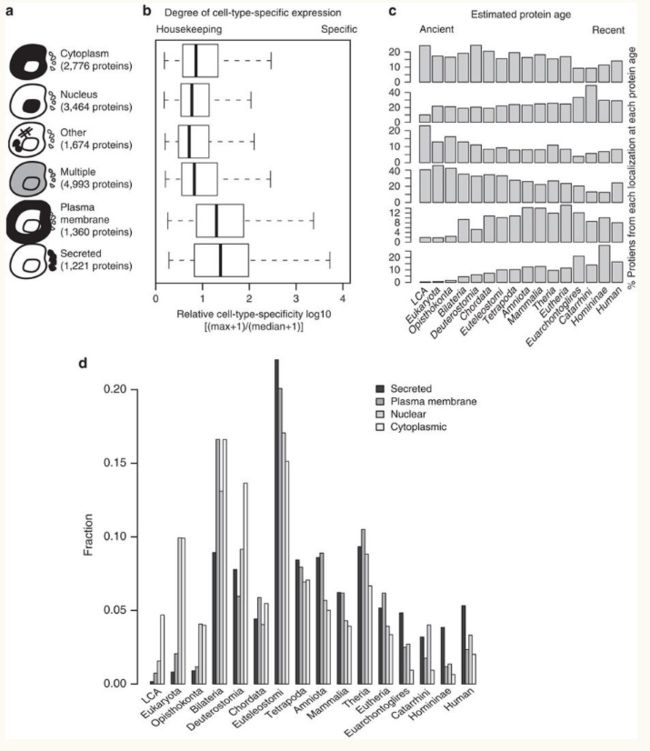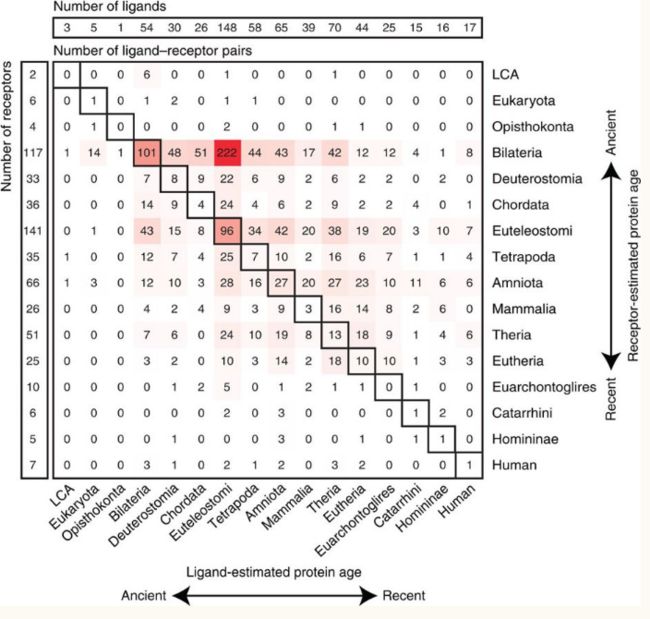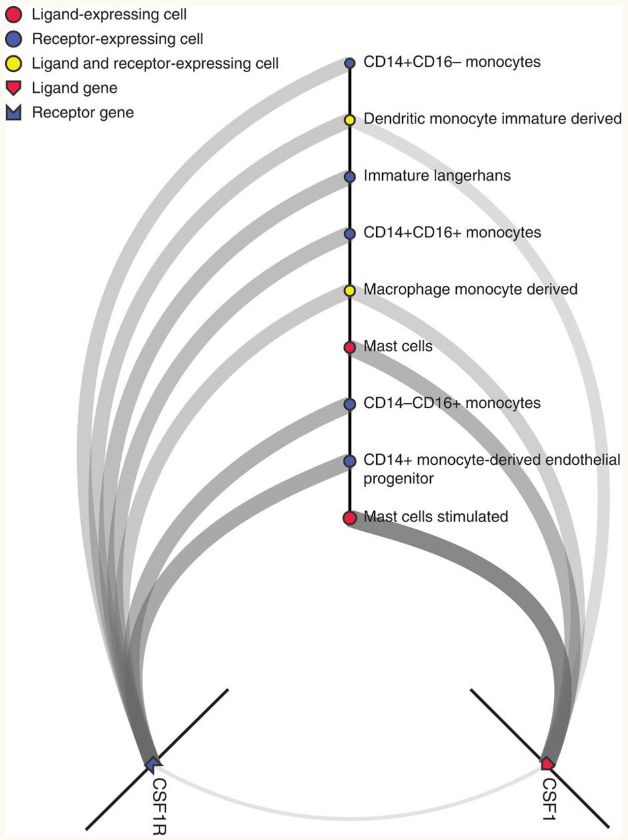A draft network of ligand–receptor-mediated multicellular signalling in human
题目:人体内配体‒受体介导的多细胞信号网络草图
作者及单位:
JordanA. Ramilowski, Tatyana Goldberg, Jayson Harshbarger, Edda Kloppmann, Marina Lizio, Venkata P. Satagopam, Masayoshi Itoh, Hideya Kawaji, Piero Carninci, Burkhard Rost&AlistairR. R. Forrest
Alistair R. R. Forrest
- RIKEN Center for Life Science Technologies, Division of Genomic Technologies, 1-7-22 Suehiro-cho, Tsurumi-ku, Yokohama 230-0045 Japan
- Harry Perkins Institute of Medical Research, QEII Medical Centre and Centre for Medical Research, the University of Western Australia, PO Box 7214, 6 Verdun Street, Nedlands, Perth, Western Australia 6008, Australia
发表刊物及时间:
Nature Communications volume 6, Article number: 7866 (2015) Published: 22 July 2015
摘要:
Cell-to-cell communication across multiple cell types and tissues strictly governs proper functioning of metazoans and extensively relies on interactions between secreted ligands and cell-surface receptors. Herein, we present the first large-scale map of cell-to-cell communication between 144 human ==primary cell==(原代细胞) types. We reveal that most cells express tens to hundreds of ligands and receptors to create a highly connected signalling network through multiple ligand–receptor paths. We also observe extensive autocrine signalling with approximately two-thirds of partners possibly interacting on the same cell type. We find that plasma membrane and secreted proteins have the highest cell-type specificity, they are evolutionarily younger than intracellular proteins, and that most receptors had evolved before their ligands. We provide an online tool to interactively query and visualize our networks and demonstrate how this tool can reveal novel cell-to-cell interactions with the prediction that mast cells signal to monoblastic lineages via the CSF1–CSF1R interacting pair.
多种细胞类型和组织之间的细胞‒细胞通讯严格控制着后生动物的正常功能,并广泛地依赖于分泌配体和细胞表 面受体之间的相互作用。在此,我们率先提出了144种人类原代细胞类型当中的大规模细胞‒细胞间通讯图谱。 我们揭示了大部分表达数十至数百个配体和受体的细胞会通过多种配体‒受体通路产生高度连接的信号传导网 络。同时,我们也观察到广泛的自分泌信号传导,大约2/3的伴侣可能跟同种细胞类型互作。我们发现质膜和 分泌蛋白有着最高的细胞类型特异性,他们在进化上比胞内蛋白更年轻,并且大多数受体比它们的配体先形 成。我们提供了一个在线工具,用于交互式查询和可视化我们的网络,并演示该工具如何通过CSF1‒CSF1R相 互作用对来预测肥大细胞对单核细胞谱系信号传导,从而揭示新的细胞间相互作用
图表选析:
Figure 1: Relationship between protein subcellular localization, cell-type specificity and gene ages. 蛋白亚细胞定位、 细胞类型特异性 和基因年龄间的联系
(a) Breakdown of known subcellular localization of protein-coding genes expressed > 1 TPM in at least one primary state for which protein ages were available. (a)蛋白质编码基因的已知亚细胞定位的分解在至少一种可获得蛋白质年龄的原始状态中表达> 1TPM。
(b) Interquartile range distributions (whisker boxes) and relative cell-type specificity for each protein subcellular compartment from FANTOM5 primary cell expression profiles. Both secreted and plasma membrane proteins are significantly more cell-type specific than nuclear and cytoplasmic proteins (each Mann – Whitney U-test-adjusted ==P value<000.1==(此处应该是标错了?)). (b) 来自 FANTOM5 原代细胞表达谱的每个蛋白质亚 细胞区室的四分位数范围分布(箱型图) 和相对细胞类型特异性。 分 泌蛋白和质膜蛋白都比核蛋白和细胞质蛋白明显更具细胞类型特异 性(每个 Mann-Whitney U-检验调整后 P 值都小于 000.1) 。
(c) Relative fractions of proteins at each evolutionary stage for selected subcellular localization (secreted, plasma membrane, nucleus, cytoplasmic and other) using the methods of Wagner. All fractions at a given age add to 100%. (c) 使用 Wagner 的方法, 在选择的亚细胞定 位(分泌的, 质膜, 细胞核, 细胞质和其他) 的每个进化阶段的蛋白 质的相对分数。 给定年龄的所有片段均增加至 100%。
(d) As in c but scaled for visualization purposes to the number of nuclear proteins. Both secreted (average age: 412.2mya) and plasma membrane (average age: 517.2mya) proteins are significantly younger than nuclear (average age: 663.1mya) and cytoplasmic proteins (average age: 855.1mya), each Mann–Whitney U-test-adjusted P value<000.1. Note: exact numbers of proteins for each subcellular localization class in each phylostrata are available in Supplementary Data 1. 如图 c, 但为了可视化而缩放了核蛋白的数量。 分泌蛋白(平均年 龄: 412.2mya(million of years ago))和质膜蛋白(平均年龄: 517.2mya) 明显比核蛋白(平均年龄: 663.1mya) 和细胞质蛋白质(平均年龄: 855.1mya) 更年轻, 每个 Mann-Whitney U-检验 -adjusted P value 小 于 000.1。 注意: 附录数据 1 中提供了任一层级中每个亚细胞定位类 别的确切蛋白质数量。
Figure 2: Comparative age of genes encoding receptors and ligands.
图2:编码受体和配体的基因的年龄比较
Top and left panels list the number of ligands and receptors estimated to have arisen at each phylostratum using the method of Wagner21. Middle panel shows the number of ligand–receptor pairs observed in a given phylostrata. Intensity of red scales with the number of pairs. Note: many interactions (297 pairs) appeared at the same evolutionary stage (diagonal boxes), but we also observe a significant enrichment for 1,081 pairs where the receptor had appeared before the ligand as compared with 431 pairs, where the ligand had appeared first (binomial one-sided P value<0.001; 95% confidence interval [0.695, 1]).
上方和左方列出了使用Wagner21的方法估计在每个系统发育层级产生的配体和受体的数量。中间部分显示了在给定的系统发育层级中观察到的配体 - 受体对的数量。红色强度与对数的比例。注意:许多相互作用(297对)出现在相同的进化阶段(对角线框),但我们也观察到1,081对的显着富集,其中受体出现在配体之前,而431对,其中配体首先出现(二项式单侧P值<0.001; 95%置信区间[0.695,1]。
Using our reference ligand–receptor pairs and the protein age estimates20,21, we examined whether the interacting partners appeared during the same evolutionary period as previously reported33, or if one had preceded the other29. We found that many cognate partners originated at the same phylostratum (273 pairs). However, we also observed an excess of 1,082 pairs where the ligand was younger than the receptor as compared with only 431 pairs where the ligand was older
利用我们的参 考配体-受体对和蛋白质年龄估计值20, 21,我们检查了相互作用的伙伴是否出现在与先前报道的33相 同的进化时期,还是在另一个之前29。我们发现许多同源伴侣起源于同一系统层(273对)。然而,我们 也观察到配体比受体年轻的超过1, 082对,而在配体较老的情况下,只有431对。 (即大多数受体都是 在配体之前进化的)
Figure 4: Ligand–receptor signalling network interface (hive view).
The results of a search for the CSF1–CSF1R ligand–receptor pair, filtered for the top cell-to-cell paths (ranked by the product of CSF1 and CSF1R expression). In this network, stimulated mast cells express the highest levels of CSF1 (1,109 TPM), while CD14+ derived endothelial progenitor cells express the highest levels of CSF1R (699 TPM). Users can select cells and/or ligand–receptor (LR) pairs of interest and filter edges and nodes based on expression levels of L and R. The interface is available at: http://fantom.gsc.riken.jp/5/suppl/Ramilowski_et_al_2015/.
图 4:配体受体信号网络接口(hive 视图) 搜索 CSF1 - CSF1R 配体-受体对的结果,筛选顶级细胞到细胞的路径(按 CSF1 和 CSF1R 表达的乘积排序)。在这个网络中,受刺激的肥大细胞表达最高水平的 CSF1 (1109 TPM),而 CD14+来源的内皮祖细胞表达最高水平的 CSF1R (699 TPM)。 用户可以根据 L 和 R 的表达水平选择感兴趣的细胞和/或配体受体(LR)对,并对边缘和节点进行过滤。 网址 是 http://fantom.gsc.riken.jp/5/suppl/Ramilowski_et_al_2015/
翻译小组:
叶名琛、王俊豪、陈志荣、邓峻玮、郑凌伶


